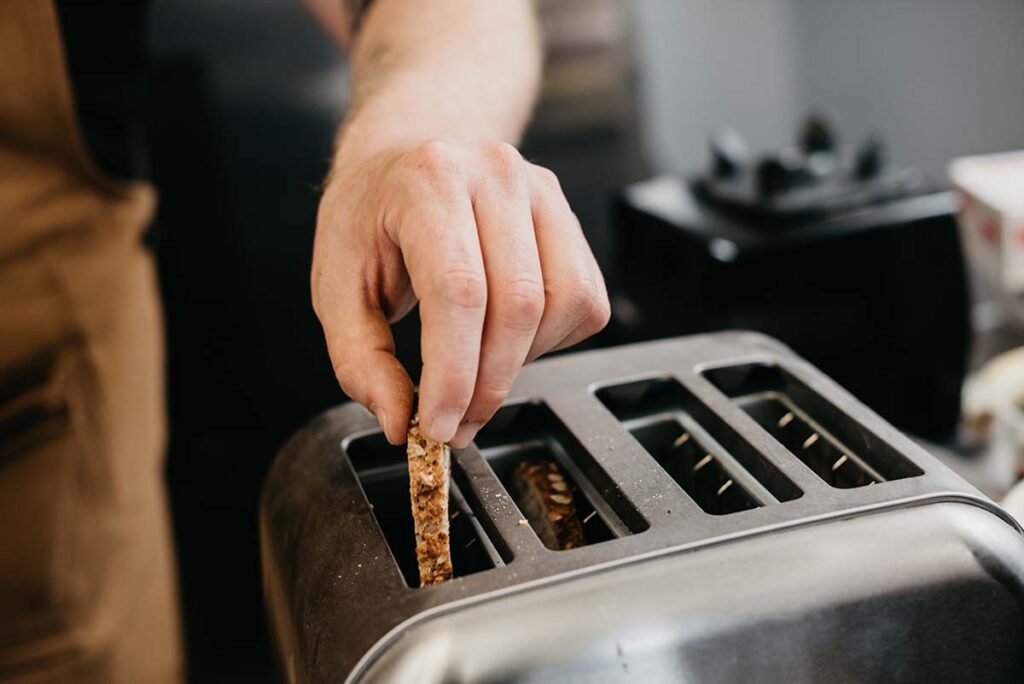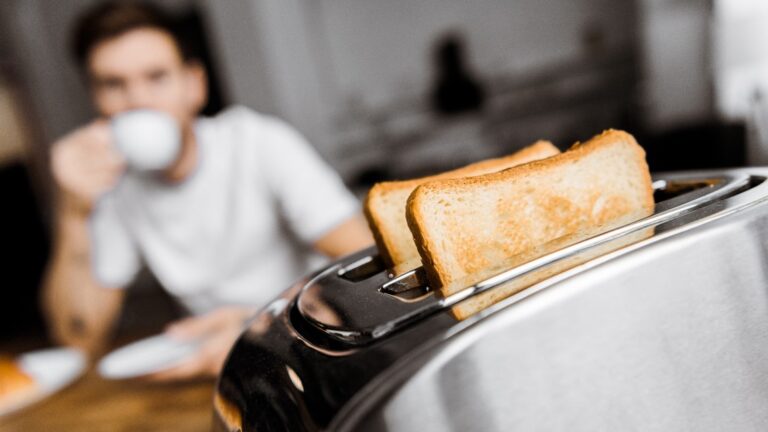Generally, traditional toasters do not consume electricity when they are not in use, assuming they are unplugged or not actively toasting bread. However, some toasters have additional features such as LED indicator lights or clocks that may continue to draw a very small amount of power when plugged in, even if they are not actively toasting bread. This standby power consumption, often referred to as “phantom” or “vampire” power, is minimal compared to the energy used while toasting.
To minimize electricity usage, it’s a good practice to unplug appliances like toasters when they’re not in use, especially if you’re concerned about reducing energy consumption or if you want to prevent any standby power draw.
What is standby power consumption and its impact on energy use?

Standby power consumption, often referred to as “phantom” or “vampire” power, is the electricity consumed by electronic devices when they are turned off but remain plugged in or in standby mode.
Many appliances and devices, such as TVs, computers, game consoles, chargers, and kitchen appliances, continue to draw a small amount of power even when they’re not in active use.
The impact of standby power consumption on energy use can be significant on a larger scale. Here are some key points about its impact:
Energy Waste: Standby power can account for a notable portion of household energy consumption. While each individual device might only use a small amount of electricity, the cumulative effect across multiple devices in a home can be significant.
Environmental Impact: The continuous consumption of electricity by devices in standby mode contributes to overall energy usage and, subsequently, increased greenhouse gas emissions if the electricity is generated from fossil fuels. Reducing standby power can help mitigate environmental impacts.
Increased Electricity Bills: Though the power consumption of individual devices in standby mode is small, over time, it can contribute to higher electricity bills. Unplugging or using power strips to completely cut off power to devices when not in use can help save on energy costs.
Efficiency Standards and Regulations: Some countries and regions have implemented efficiency standards for electronics to limit standby power consumption. Manufacturers are encouraged to produce more energy-efficient devices that consume less power when in standby mode.
To reduce standby power consumption and its impact
When not in use, unplug devices or use smart power strips that cut off power to multiple devices when they’re turned off.
Look for energy-efficient appliances and electronics that have low standby power consumption.
Utilize power-saving settings and features on devices that automatically power down or enter low-power modes when not actively in use.
Unplug chargers and adapters once devices are fully charged to prevent them from drawing unnecessary power.
How do toasters operate and what are their components?
Toasters are simple yet effective kitchen appliances designed primarily to toast slices of bread or similar food items. They operate based on the principles of heating elements and timing mechanisms. Here’s a breakdown of how they work and their main components:
Components of a Toaster
Body or Casing: The outer structure of the toaster, often made of metal or plastic, houses the internal components.
Bread Slots: These are the openings or slots where the bread slices are placed for toasting. Most toasters have 2 or 4 slots for accommodating bread.
Control Panel or Dials: The control panel typically includes settings for adjusting the level of toasting (light, medium, dark), along with buttons or dials for selecting the desired toasting time.
Heating Elements: These are the critical components responsible for generating heat. Toaster heating elements are usually made of Nichrome wire, which has high electrical resistance and heats up when electricity passes through it.
Thermostat: To maintain the desired toasting temperature, toasters are equipped with thermostats that regulate the heat produced by the heating elements.
Lever or Push-Down Mechanism: This mechanism is used to lower the bread slices into the toaster slots. When the lever is pushed down, it activates the toasting cycle.
Timer Mechanism: To control the toasting duration, toasters have a timer or timing mechanism that determines how long the heating elements stay on.
How Toaster Operates

Placing Bread: The user places slices of bread into the slots.
Pushing Down the Lever: When the lever is pushed down, it activates the heating elements and starts the toasting process.
Heating: Electricity passes through the heating elements, which start to heat up. The heat radiates towards the bread, toasting it.
Timer Function: The timer or timing mechanism controls how long the heating elements remain active. When the set time elapses or when the desired level of toasting is reached, the heating elements turn off automatically.
Popping Up: The toaster releases a mechanical catch, and springs push the lever back up, raising the toasted bread slices out of the slots. Some toasters have a manual lift as well.
Safety Features: Many toasters have safety features like automatic shut-off in case of overheating or if the bread gets jammed.
FAQ’s
Does a toaster use a lot of electricity?
Traditional toasters don’t use a significant amount of electricity while toasting. Their energy consumption is relatively low.
Is electricity used if plugged but not on?
Some toasters draw minimal standby power when plugged in but not actively toasting. This standby power consumption is minimal compared to active use.
How is energy wasted in a toaster?
Energy is wasted in a toaster through standby power consumption, particularly when it remains plugged in without actively toasting.
How much electricity does unplugging the toaster save?
Unplugging a toaster when not in use can save a small amount of standby power, but the actual energy savings are relatively minor compared to other household appliances.
What appliances use the most electricity when turned off?
Appliances like TVs, computers, game consoles, and chargers can consume notable standby power when turned off, contributing to overall energy usage.
What uses most electricity in a house?
Heating, cooling systems, water heaters, and large appliances such as refrigerators and washing machines typically consume the most electricity in a household.
Final Words
The article illuminates the electricity consumption of toasters, highlighting that traditional toasters generally do not consume electricity when not in use, provided they are unplugged or not actively toasting bread. However, certain toasters with additional features like LED indicator lights or clocks may draw a minimal amount of standby power when plugged in, though significantly less than when actively toasting.
It emphasizes the concept of standby power consumption or “phantom” energy and its broader implications on household energy use. Standby power, prevalent across various electronic devices, contributes to energy waste, impacts the environment through increased greenhouse gas emissions, and can lead to higher electricity bills when summed across multiple devices.

